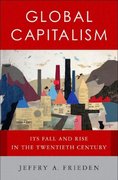Question
PART A. MULTIPLE CHOICE QUESTIONS. Choose the one alternative that best completes the statement or answers the question. 1) Marginal product A) is the rate
PART A. MULTIPLE CHOICE QUESTIONS. Choose the one alternative that best completes the statement or answers the question.
1) Marginal product
A) is the rate of change in the total product.
B) is always zero.
C) equals average product minus total product.
D) lies between zero and one.
E) is always negative.
2) If the total product of three workers is 214 and the total product of four workers is 221, then the marginal product of the fourth worker is
A) 7. B) 62.14. C) 55.25. D) 71.3. E) 1.75.
4) Which one of the following statements is true?
A) When the average product curve is rising, marginal product is less than average product.
B) The highest value of average product occurs where average product equals marginal product.
C) The highest value of average product occurs where average product is greater than marginal product.
D) When the average product curve is falling, marginal product is greater than average product.
E) The maximum total product occurs at minimum marginal product.
5) When the marginal product of labour is less than the average product of labour,
A) the marginal product of labour is increasing.
B) the total product curve is negatively sloped.
C) the firm is experiencing diminishing marginal returns.
D) the average product of labour is increasing.
E) None of the above.
6) Which of the following are correct? According to the law of diminishing returns,
(1) marginal product eventually rises.
(2) marginal product eventually falls.
(3) marginal cost eventually rises.
(4) marginal cost eventually falls.
A) (1) and (3) B) (1) and (4) C) (2) and (3) D) (2) and (4) E) (4)
8) Marginal cost is equal to
A) total cost divided by output.
B) the increase in total cost divided by the increase in labour input, given the amount of capital.
C) the increase in total cost divided by the increase in variable cost.
D) the increase in total cost divided by the increase in output.
E) total variable cost minus total fixed cost.
9) Choose the correct equation.
A) TFC=TVC/Q
B) TFC=TC/Q
C) TFC=TVC-TC
D) TFC=TC-AVC
E) TFC=TC-TVC
10) Which one of the following does not occur in perfect competition?
A) Sellers and buyers are well informed about prices.
B) Established firms have no advantage over new ones.
C) There are many buyers.
D) No single firm can exert a significant influence on the market price of the good.
E) There are significant restrictions on entry into the market.
11) A price-taking firm faces a
A) perfectly inelastic demand.
B) downward-sloping demand curve.
C) perfectly elastic demand.
D) downward-sloping marginal revenue curve.
E) downward-sloping supply curve.
14) A firm maximizes profit at
A) MC = MR.
B) MC > MR.
C) MC < MR.
D) MC > 0.
E) MC< 0.
15) In which one of the following situations will a perfectly competitive firm make an economic profit?
A) ATC>MR B) MC>AVC C) MR>AVC D) ATC>MC E) MR>ATC
choose the best answer only. Do not need to explain the answers.
Step by Step Solution
There are 3 Steps involved in it
Step: 1

Get Instant Access to Expert-Tailored Solutions
See step-by-step solutions with expert insights and AI powered tools for academic success
Step: 2

Step: 3

Ace Your Homework with AI
Get the answers you need in no time with our AI-driven, step-by-step assistance
Get Started


